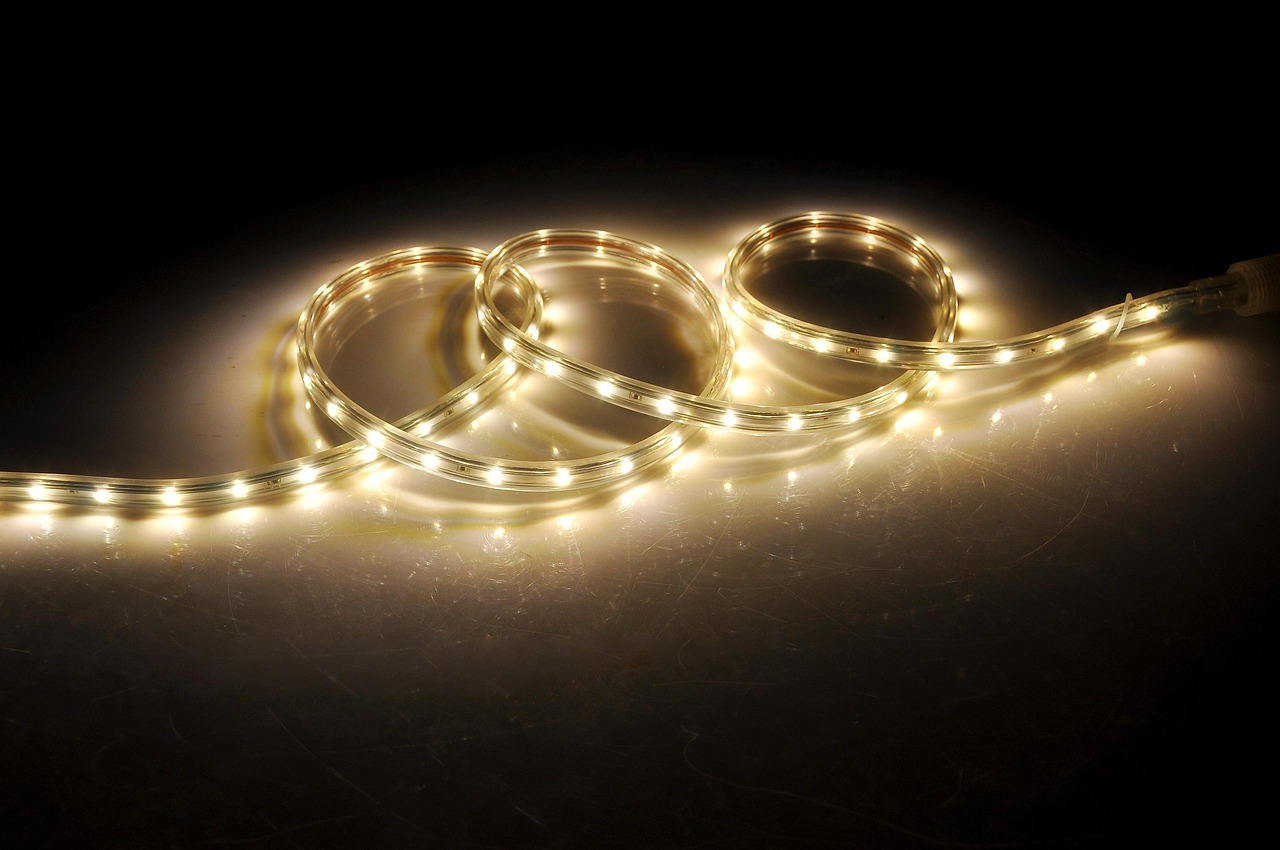How to Identify the Best LED Supplier for Your Project

Choosing the right LED suppliers is crucial for your project's success. Quality LED suppliers enhance the reliability and value of your work. Research indicates that superior suppliers contribute to better outcomes. For instance:
Studies demonstrate that reputable LED suppliers help projects maintain high performance over time.
Experts analyze data to link the quality of LED suppliers with overall success.
Surveys reveal trends regarding the reliability of various LED suppliers.
Leading LED suppliers offer robust products, innovative designs, and excellent service. This makes them the ideal choice for your project and aids you in achieving your objectives.
Key Takeaways
Pick suppliers with lots of experience. They make trustworthy products and offer good services.
Check for top-quality LED products with safety labels. Labels like CE and UL mean they are safe and work well.
Think about custom options. Custom LEDs use less energy and improve your project’s look.
Balance price and quality. Spending on good LEDs saves money on energy and repairs later.
Ask about warranties and help. Good warranties and support make your project easier.
Key Criteria for Evaluating LED Suppliers
Supplier Experience and Expertise
Checking industry experience
Pick LED suppliers with lots of experience in the field. Experienced suppliers usually provide dependable products and services. They understand market trends and challenges, so they can meet your needs. Awards or certifications show their skill and trustworthiness.
A supplier's reputation is also important. Good reviews from past customers show they perform well and satisfy clients. Look at testimonials or case studies to confirm this. Also, check if the supplier has a strong quality system, like ISO 9001, to ensure reliability.
Understanding expertise in LED technologies
Knowing LED technology is key for creating new solutions. Suppliers who focus on research often have advanced products. For example, smart lighting and IoT features improve control and use. Check if the supplier offers solutions that fit your project’s needs.
Ask for product samples or demos to test their technology. This helps you see if their products meet your performance and durability standards.
Product Quality and Certifications
Why high-quality LED products matter
Good products last longer and work better. Tested LEDs fail less and are more durable. This lowers repair costs and improves project results. Ask for test reports, like vibration or salt spray tests, to check quality.
Certified products are more trusted by buyers. Certifications like CE and UL prove safety and performance, lowering risks. Following standards also keeps your project legal and eco-friendly.
Important certifications for LED suppliers
Certifications are vital when picking an LED supplier. CE certification shows EU safety compliance, and UL ensures product safety. ENEC and CB certifications confirm quality and help with global sales. EMC certification ensures devices work without interference.
RoHS certification supports eco-friendly practices by meeting environmental rules. These certifications boost the supplier’s reputation and widen their market reach.
Customization and Product Range
Why customized LED solutions are helpful
Custom LEDs are better than standard ones in many ways. Special designs save energy, cut power use, and last longer. This supports the push for eco-friendly lighting.
Unique designs also match modern styles that focus on looks. Suppliers offering custom options can help make your project stand out. This ensures your lights are both useful and attractive.
Checking product variety and design choices
A wide product range shows the supplier can handle different needs. See if they offer many designs, colors, and features. This variety helps you pick products that fit your project.
Suppliers with custom options often know LED technology well. Their ability to adjust products solves unique problems. Look at their portfolios or case studies to judge their skills.
Pricing and Budget Considerations
Balancing cost and quality
Picking an LED supplier means balancing price and quality. Choosing the cheapest option might seem smart but costs more later. Good-quality LEDs save energy, with some reaching 180 Lumens per watt. This lowers electricity bills, especially in places with heavy lighting use.
A trustworthy supplier gives warranties and great customer support. These features reduce repair costs and make lights last longer. Instead of just looking at price, compare how efficient and durable their products are. This way, you get more value for your money.
Ask suppliers for catalogs, product sheets, or ROI reports. These tools show how their products save money over time. By checking both cost and quality, you can find a supplier that fits your project without losing performance.
Identifying hidden costs or fees
Hidden fees can mess up your budget. Always check the purchase terms carefully. Some suppliers add extra charges for custom designs, shipping, or setup. These fees can make cheap prices less appealing.
To avoid surprises, ask for a full list of costs. This should include product prices, delivery fees, and extra services. Honest suppliers share this info upfront, helping you plan better.
Think about long-term costs like energy use and repairs too. High-quality LEDs may cost more at first but save money later. They use less power and last longer. By spotting hidden fees and checking total costs, you can pick a supplier that gives the best deal.
Practical Steps to Choose the Best LED Supplier
Researching LED Suppliers
Using online resources effectively
Start by using the internet to find LED suppliers. Search engines can help you locate top-rated companies. Visit their websites to learn about their products and services. Platforms like LinkedIn or industry forums show their reputation and skills.
Check customer reviews on sites like Google or Trustpilot. Reviews tell you if the supplier is reliable. Look for comments about good service, quality products, and fast delivery. This helps you pick a supplier that fits your project needs.
Reviewing case studies and portfolios
Case studies and portfolios show what a supplier can do. See if they’ve worked on projects like yours before. For example, a company with big project experience can handle tough jobs.
Portfolios display different LED designs, including energy-saving and custom options. Reviewing these helps you judge their skills and ability to deliver great results.
Asking Key Questions
Questions about lead times and delivery options
Ask how long it takes for them to deliver products. Good suppliers give clear timelines and deliver on time. Make sure they can meet your deadlines without lowering quality.
Find out about their delivery network and flexible options. This is key for big projects where delays can cause problems. A helpful customer service team should answer these questions quickly.
Questions about warranties and customer support
Warranties and support are very important. Ask about the warranty terms for their LED products. A strong warranty shows they trust their products.
Check how good their customer service is. Do they help with installation? Do they solve problems after purchase? Good support makes your project easier and stress-free.
Comparing Suppliers and Making a Decision
Creating a comparison checklist
A checklist helps you compare suppliers easily. Include things like energy efficiency, product quality, price, and warranty. Give each supplier a score based on these points.
For example, check if their LEDs have 160 Lumens per watt or more. Use a ranking system to find the supplier that offers the best value.
Prioritizing factors based on project needs
Every project is different. Focus on what matters most for your goals. If you need custom LED designs, choose suppliers with proven experience in customization.
Think about long-term benefits like saving energy and durability. A supplier with high-quality products and good warranties may cost more now but saves money later. Match your needs with the supplier’s strengths to make the best choice.
Post-Purchase Support and Compliance
Why Warranties and Support Matter
Checking warranty details
A good warranty protects your LED lighting investment. It shows the supplier trusts their product's quality. Look at how long the warranty lasts and what it covers. Some warranties only fix factory problems, while others promise performance too.
Make sure the warranty includes repair or replacement costs. Longer warranties often mean the supplier believes in their product. For example, a company offering a five-year warranty shows confidence in their LEDs lasting a long time.
Looking at after-sales support
After-sales help keeps your lighting system working well. Good customer service fixes problems quickly. Choose suppliers who offer technical help, setup advice, and troubleshooting tips.
Great suppliers also provide guides like manuals or online videos. These tools help you save energy and make your LEDs last longer. Strong support means fewer delays and smoother projects.
Following Rules and Standards
Meeting safety rules
Safety standards make sure LED products are safe and high-quality. Certified products lower risks like shocks or fires. Always check if the supplier follows rules like CE, UL, or RoHS.
These certifications also improve energy use and protect the environment. A supplier following these rules shows they care about safety and reliability.
Problems with breaking rules
Not following safety rules can cause big problems:
Customers may lose trust, and bad news can hurt your image.
Unsafe products can cause shocks or injuries.
Breaking rules can lead to stricter checks and sales limits.
Long-term effects include losing business and financial trouble.
Picking a supplier who follows rules avoids these problems. It helps your project succeed without risks.
Picking the right LED supplier is important for your project. Check suppliers for their experience, product quality, and support. This helps you find reliable and efficient solutions. Research carefully and ask smart questions to avoid mistakes.
💡 Tip: Make a list of what matters most to you. Compare suppliers using this list to stay focused on your goals.
Start now! Begin checking suppliers today to make your project successful for years to come.
FAQ
What certifications are most important when choosing an LED supplier?
Look for certifications like CE, UL, and RoHS. CE shows the product meets EU safety rules. UL ensures the product is safe to use. RoHS confirms the product is eco-friendly. These prove the supplier values safety and quality.
💡 Tip: Check if certifications are real to avoid fake claims.
How can you check a supplier’s experience in the LED field?
Find out how long they’ve been in business. Look at their past projects or case studies. Positive reviews and awards also show they are skilled.
Why does customization matter for LED projects?
Customization helps match LEDs to your project’s needs. It improves energy savings, looks, and usefulness. Suppliers offering custom options often have advanced skills.
What should you ask about LED warranties before buying?
Ask how long the warranty lasts and what it covers. Make sure it includes fixing or replacing faulty products. A longer warranty shows the supplier trusts their product.
How can you avoid extra costs when picking an LED supplier?
Ask for a full list of costs, like product prices and shipping. Honest suppliers share clear pricing details upfront. Energy-saving LEDs may cost more now but save money later.
🔍 Note: Extra fees can ruin your budget. Always confirm costs before buying.
